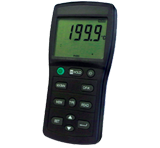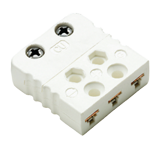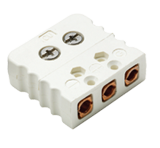FEP Insulated Pt100 Sensor RTD PRT (Type 73)
Other Popular Resistance Thermometers - Pt100 Sensors
 Request a Quote
Buy Online from TC Direct
Request a Quote
Buy Online from TC Direct
TC - Trusted by UK manufacturers, OEMs, and research labs for over 50 years.
Related Products
RTD Pt100 Indicator
Related Products
Miniature Socket - Three Pin
Related Products
Standard Socket - Three Pin
These flexible FEP insulated RTD Pt100s are ideally suited to applications which require resistance to attack from virtually all known chemicals, oils and fluids. Available in tolerance class B or A, 4mm in diameter, the length of which can be cut down to an exact size by the user if necessary. The sensing junction is encapsulated in the tip and the whole sensor is rated to 200°C. Adjustable PTFE compression fittings for an exact insertion length in your process are also available in either 1/4 inch or 1/2 inch BSPT. Maximum length 5mtrs. Available in a 3 or 4-wire configuration. A heavy duty version is also available with a heavy duty FEP plug ended sheath overall, 300mm as standard but other lengths are available upon request.
Frequently Asked Questions
- What is an RTD Pt100 sensor, and how does it work?
An RTD (Resistance Temperature Detector) Pt100 sensor measures temperature by detecting changes in electrical resistance. The "Pt" stands for platinum, the material used in the sensing element, and "100" refers to the resistance value of 100 ohms at 0°C. As the temperature changes, the resistance of the platinum element varies, allowing for accurate temperature measurements. - How accurate are RTD Pt100 sensors?
RTD Pt100 sensors offer high accuracy and stability, with industrial-grade elements ranging from Class B (±0.3ºC at 0ºC) to Class A (±0.15ºC at 0ºC). Higher precision options, such as 1/10 class elements, provide an accuracy of ±0.03ºC at 0ºC. These sensors are widely used in industrial, laboratory, and scientific applications requiring high precision. Additionally, we offer calibration services in our UKAS accredited laboratory. - What is the temperature range for RTD Pt100 sensors?
The temperature range of an RTD sensor depends on factors such as the construction, sheath material and insulation used in the construction. While some platinum elements can withstand temperatures up to 850°C, the overall sensor design will limit the maximum temperature rating. Please check the product specifications for the exact temperature range based on the sensor’s construction. If you need any advice, our engineers are happy to assist!

 France
France Germany
Germany Spain
Spain Netherlands
Netherlands Italy
Italy Hungary
Hungary United States
United States Australia
Australia